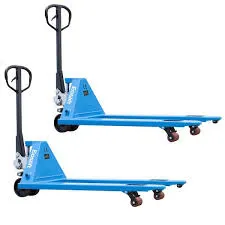


Small Electric Hoist A Versatile Lifting Solution
In today’s fast-paced world, efficiency and convenience are paramount, especially in industries requiring material handling and lifting operations. One solution that has gained significant popularity is the small electric hoist. These compact lifting devices are designed to make lifting and lowering heavy loads much easier, safer, and more efficient. Whether used in construction, automotive repair, manufacturing, or home workshops, small electric hoists have become an indispensable tool for many professionals and DIY enthusiasts alike.
What is a Small Electric Hoist?
A small electric hoist is a lightweight lifting device powered by electricity, designed to lift small to moderate weights easily. Typically mounted on a beam or gantry, these hoists operate via a motor that drives a pulley system. An electric hoist can lift and lower loads vertically with precision, making them ideal for lifting items such as machinery parts, tools, or building materials.
Advantages of Small Electric Hoists
1. Efficiency Compared to manual hoisting methods, small electric hoists significantly reduce the time and effort required to lift heavy objects. One can easily operate these devices with the push of a button, allowing for quicker job completion and increased productivity.
2. Safety Lifting heavy materials manually poses a risk of injury to workers. Small electric hoists minimize the danger associated with manual handling by mechanically lifting the loads, thereby enhancing workplace safety.
3. Versatility Small electric hoists are incredibly versatile, suitable for a wide range of applications. They can be used in various settings, including warehouses, garages, workshops, and construction sites. Their adaptability to different tasks makes them a valuable tool across multiple industries.
4. Compact Design The design of small electric hoists is typically compact and lightweight, making them easy to transport and store. Their small size allows for installation in tight spaces where traditional hoisting systems may not fit, providing flexibility in operations.

5. Cost-Effective While there's an upfront investment in purchasing a small electric hoist, the long-term benefits, including reduced labor costs, enhanced productivity, and lower injury rates, often lead to overall cost savings for businesses.
Choosing the Right Small Electric Hoist
When selecting a small electric hoist, it's essential to consider several factors
- Weight Capacity Ensure the hoist can handle the maximum weight of the loads you intend to lift. Common weight capacities for small electric hoists range from a few hundred pounds to several tons. - Lifting Height Evaluate the height you need to lift your loads. Different models offer varying lifting heights, so choose one that meets your specific requirements.
- Power Source Most small electric hoists are powered by electricity; however, some models may operate on battery power. Consider the power availability at your worksite when making your choice.
- Safety Features Look for hoists equipped with safety features such as overload protection, emergency stop buttons, and safety latches to ensure safe operation.
Conclusion
Small electric hoists are a practical solution for anyone needing to lift heavy objects in a safe and efficient manner. Their numerous advantages—such as increased productivity, enhanced safety, versatility, and compact design—make them ideal for a variety of applications. Whether you’re a professional tradesperson or a DIY hobbyist, investing in a small electric hoist can greatly simplify your lifting tasks and improve your overall workflow. With the right model tailored to your specific needs, you can tackle any lifting challenge with confidence.



